With the 80th anniversary of D-Day one year away, Mark Dapin visits the sites - on both sides of the English Channel - that commemorate this world-defining event.
Thousands of Australians sailed with the Allied armies from England to France on D-Day. Their bravery is remembered on both sides of the English Channel - in Portsmouth, Hampshire, where many embarked, and in Arromanches-les-Bains, where they landed.
Create a free account to read this article
$0/
(min cost $0)
or signup to continue reading
On June 5, 1944, 23-year-old Sub Lieutenant Richard Pirrie of the Royal Australian Naval Volunteer Reserve wrote to his family that he was about to set sail in "the greatest event in the history of the world" as part of "the greatest Armada that ever was formed" and he promised to finish his letter in a few days.
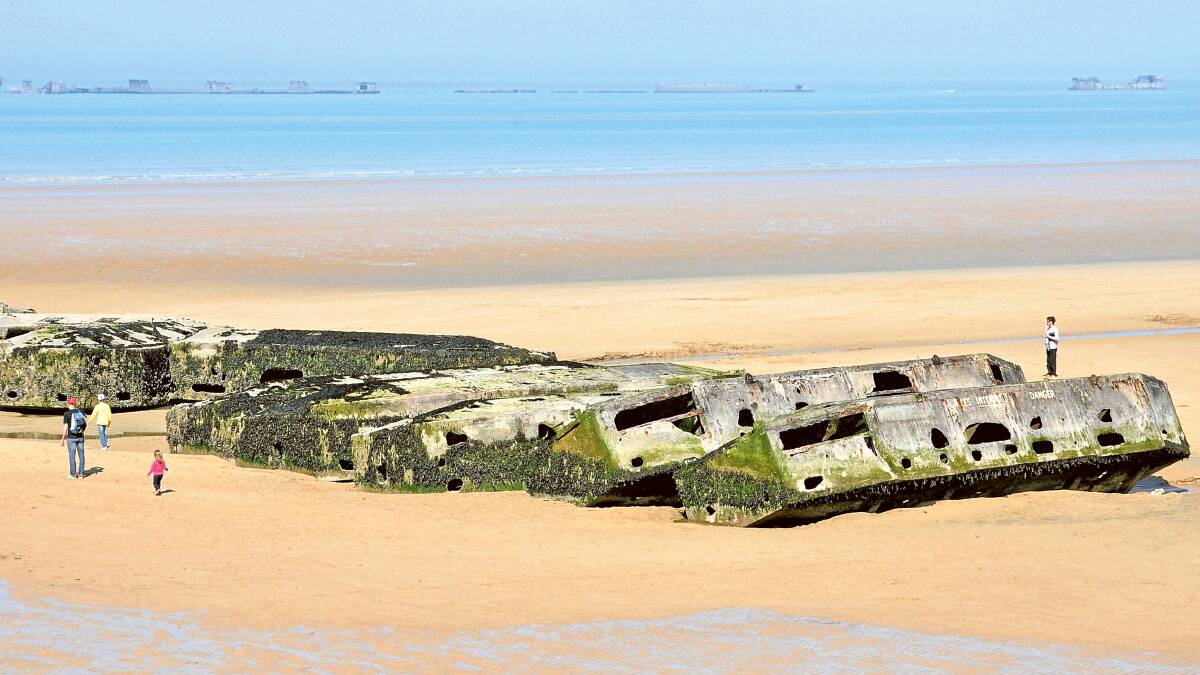
Later that evening, Pirrie joined Operation Overlord, the Allied invasion of France. The first day of Overlord on June 6 is remembered as D-Day - the "D" stands simply for day, as in "day one".
On D-Day, more than 5000 ships, boats and barges landed more than 150,000 Allied troops on five beaches along a short stretch of the Normandy coast between Utah and Sword beaches. Many British troops landed at Gold Beach off the commune of Arromanches-les-Bains, and the place has been full of Brits ever since.
Arromanches is a personable, unhurried town, a favourite of holidaymakers from the UK and the best place in Normandy to appreciate the achievement of the D-Day landings. Although daily life in Arromanches is leisurely in the French provincial manner, it's lent a certain oddness by visiting children parading around in souvenir-shop military uniforms.
Stranger still is the curiously mesmerising sight of the reinforced concrete chambers of the Mulberry floating harbours, built by the Allies to supply the armies fighting to free Normandy, still bobbing about in place a little way out to sea, or beached like gargantuan sea beasts in the sand.
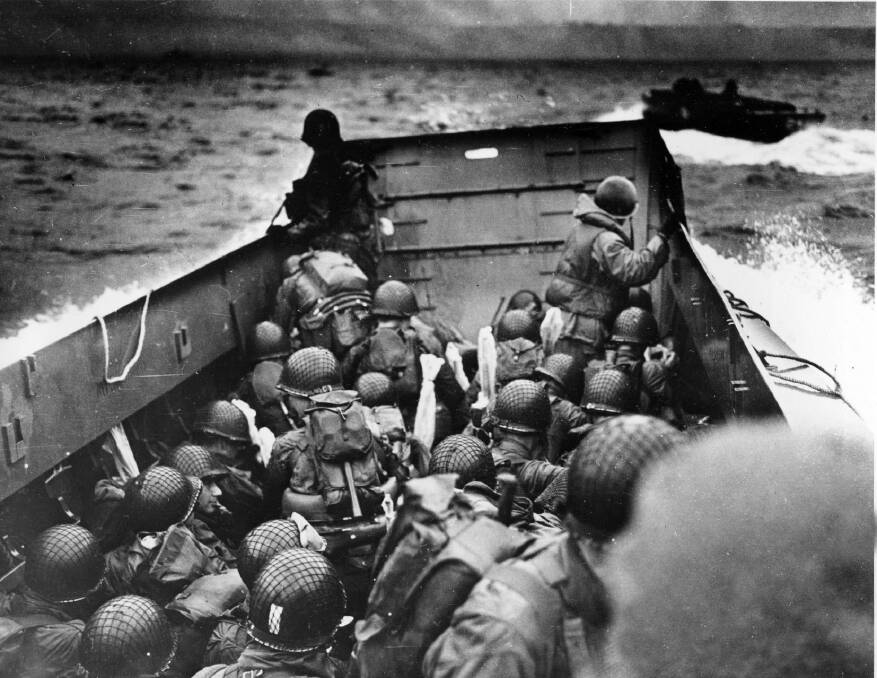
To distract attention from the D-Day landing, hundreds of dummy parachutists were dropped from planes, successfully tricking some German units into believing the invasion was taking place elsewhere. The dummies were fitted with devices rigged to detonate and burn when they hit the ground: the Germans called them "explosive puppets"; the British nicknamed them "Ruperts". An unexploded retired Rupert flops in a display case at Arromanches' new D-Day Museum (Musee du Debarquement), the unsung hero of a scarecrows' war.
It's a wonderful museum, crammed with memorabilia and detailed scale models of the Mulberry harbours in operation. All the information is given in English as well as French, and short documentary films screen in English every hour or so. For an idea of what it must have been like to attempt to stem the flow of an attacking army, try walking around the collection in the opposite direction to a large group of French schoolchildren - it worked for me.
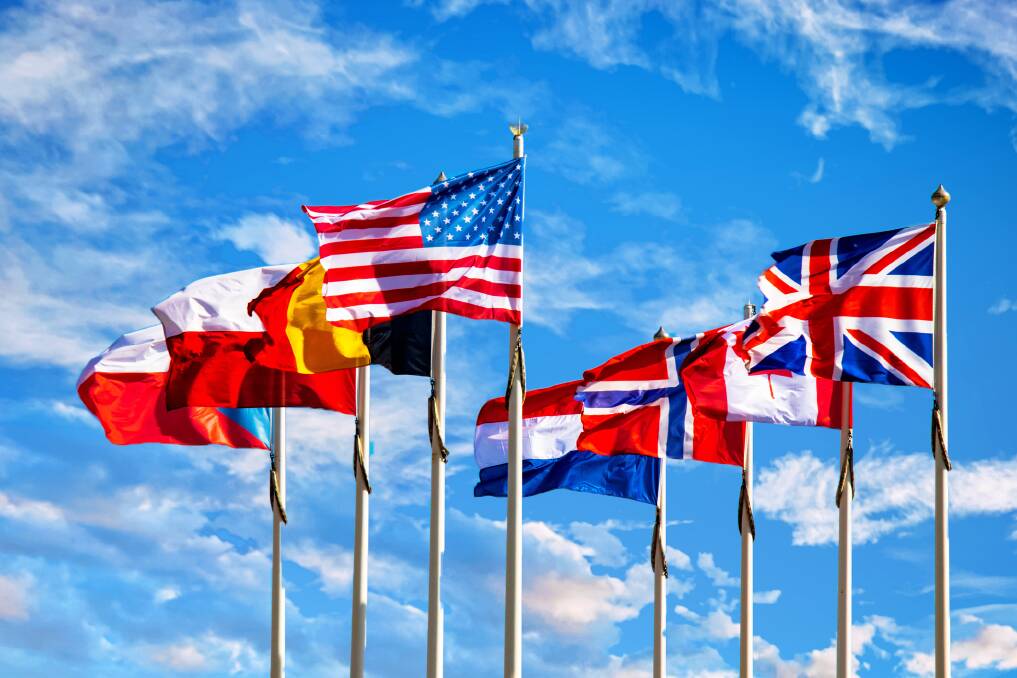
From Arromanches, it's a short and pleasant uphill stroll past the D-Day 75 Garden to the 360-degree Circular Cinema, which only ever shows one movie, The 100 Days of the Battle of Normandy. While 100 Days has its moving and immersive moments, it is also quite careless and disjointed. Bearing in mind that it's the only item on the program, it's a pity that it isn't a better film.
For safety reasons, the tourist office discourages travellers from hiking along the clifftops to the battery of German bunkers near Longues-sur-Mer, but nobody pays much attention to their warnings and the invigorating two-hour roundtrip is worth the effort. Some of the gun emplacements and foreboding artillery pieces are still intact, and the views out to sea can stir the heart into a fierce, nameless longing. Thousands of Allied soldiers, sailors and aircrew gave their lives for this land, and Europe is in their debt.
The views out to sea can stir the heart into a fierce, nameless longing.
About 3200 Australians fought in Normandy on June 6. Most were aircrew or sailors, but some Australian troops landed with the British Army.
Poor Richard Pirrie never got to finish his letter home. He was the first of 13 Australians to die on D-Day, when his landing craft was destroyed by enemy explosives off Juno Beach.
It was his 24th birthday.
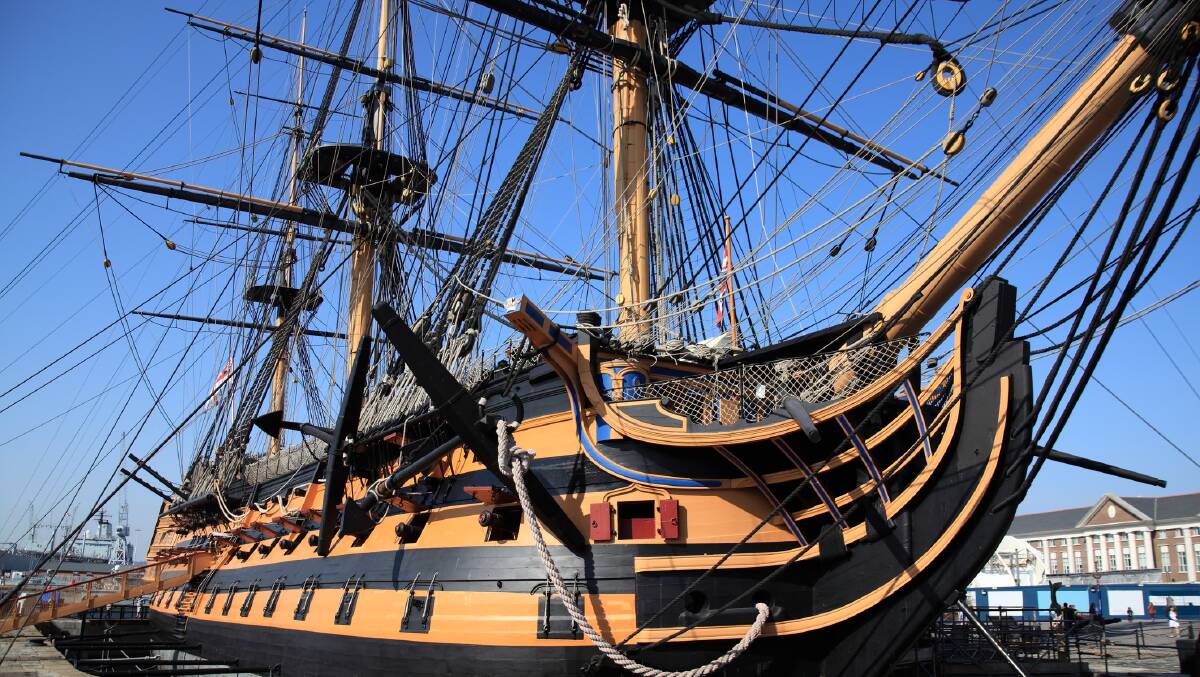
Many of the servicepeople bound for Normandy embarked from the island city of Portsmouth, the home of the Royal Navy, 120 kilometres south-west of London. Parts of the Mulberry harbours were built at Portsmouth Dockyards and many D-Day landing craft were modified in the dockyards' workshops.
Portsmouth is an endearingly straightforward place. It's a port, so it's called Portsmouth. It includes a seaside resort to the south named Southsea. Its historic fortifications embrace a round tower and a square tower, known as the Round Tower and the Square Tower.

The city's maritime heritage lives on in the historic dockyard precinct, inevitably known as Portsmouth Historic Dockyard, which is home to the wrecked, recovered and restored Tudor warship Mary Rose; Admiral Lord Nelson's HMS Victory; and the wildly diverting Action Stations, an activity centre where kids can try their hand at semi-realistic naval training (on a helicopter deck, a climbing tower and an assault course) while their parents tell them how lucky they are not to be in a real war (while conveniently forgetting they weren't in a war themselves).
HMS Vernon, a shore-based training establishment that played home to part of the British D-Day landing force, is now the landmark Gunwharf Quays, a designer outlet mall.
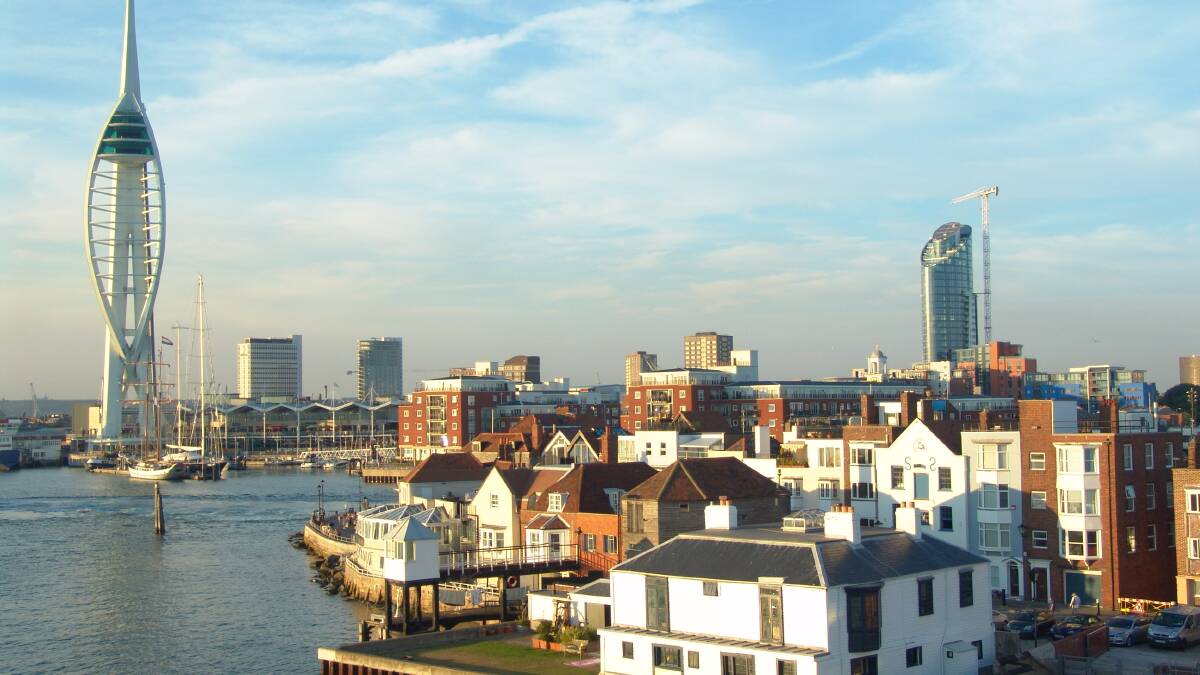
On Southsea seafront sits an excellent museum, The D-Day Story, crowded with fashionably interactive "immersive" exhibits, including Landing Craft Tank 7074, the last of its kind, which survived a later incarnation as a nightclub before it sank and was restored.
Until recently a handful of local D-Day veterans could be found sharing their memories around the museum cafe, but the last of them has now passed away. The only way you can hear their stories - and try to imagine what they went through - is by visiting the historic sites at Portsmouth and Arromanches and gazing out over the English Channel and into the past.
TRIP NOTES
ARROMANCHES-LES-BAINS
Where to stay: I booked a room at the Hotel L'Ideal de Mountbatten largely because I liked the name - but it turned out that it's now just called the Hotel L'Ideal (hotelarromanchesideal.fr), and it's a bit expensive (from 111 euros or about $180) for what it offers. Next time, I'd choose a hotel on the seafront.
Money tip: Arromanches is not overly blessed with functioning ATMs and travellers may find it difficult to obtain cash. Use the banks in Bayeux, which is less than 20 minutes away by taxi or bus (although the buses only run once a day).
Where to eat: Arromanches has a few decent restaurants that serve creditable fish and chips to British tourists: Fish & Co by Le Pappagall, below the Hotel d'Arromanches (hoteldarromanches.fr), is very friendly, and the golden battered cod is as good as most you might find on the English side of the channel. La Marine on the esplanade is more expensive, with views over Gold Beach.
The Proxi Convenience Store across the road from the Hotel L'Ideal is not particularly convenient. Although it is the largest general store in town, the owners keep untaxing hours and do not stock much fresh food. The Boulangerie Patisserie Clair de Lune bakes delicious bread and cakes.
The museum: Entry to Musee du Debarquement (musee-arromanches.fr) costs 12.70 euros. Check the website for opening times as it sometimes closes for lunch.
Explore more: bayeux-bessin-tourisme.com/en/
TRIP NOTES
PORTSMOUTH
Where to stay: The Portsmouth Marriott (marriott.com) is a typically classy, comfortable business hotel with a nice bar and rooms from £74 ($140) a night, but it's some way out of town.
The landmark redbrick Queens Hotel (queenshotelportsmouth.com) in Southsea is a good three-star choice with rooms from £95.
Where to eat: Gunwharf Quays has about 30 chain eateries, from All Bar One to Zizzi, and the old Customs House has been redeveloped as a comfortable waterside pub called - in typical Portsmouth style - the Old Customs House (theoldcustomshouse.com).
But some of the nicest places to eat are in Old Portsmouth, home to a fine bar and bistro called - what else? - Abarbistro (abarbistro.co.uk). Known to Old Portsmouth locals simply (but potentially confusingly) as "Abar", its menu includes an unfeasibly delicious shepherd's pie with cheddar mash and braised red cabbage. Try the nearby Still & West (stillandwest.co.uk) pub for a meal, a drink and a fantastic view of the harbour.
It's ironic that arguably the best places to eat in Arromanches are British-influenced fish-and-chip shops, while Portsmouth's finest restaurant is a "French-influenced" establishment at 27a South Parade in Southsea named - of course - Restaurant 27 (restaurant27.com).
If you fancy eating a pie and buying a vinyl record in Southsea, there's always (you guessed it) Southsea's Pie & Vinyl (pandvrecords.co.uk).
The museum: Entry to The D-Day Story (theddaystory.com) costs £13.50.
Explore more: visitportsmouth.co.uk




